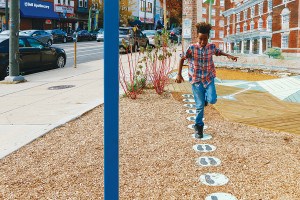OPINION: More Should Be Factored In What’s Considered ‘LGBTQ Friendly’
Another week, another ranking.
This time around, the non-profit Campus Pride, an organization that prides itself for hosting “student leaders and campus groups working to create safer, more LGBTQ-friendly learning environments at colleges and universities,” released their definitive annual list of top 30 LGBTQ-friendly colleges and universities. In Pennsylvania, only two campuses were even on the list — University of Pennsylvania and Penn State. Penn received a perfect score of 5 based on the organization’s Campus Pride Index, while Penn State was given a 4.5 score.
Campus Pride’s index is a benchmarking tool that prospective LGBTQ students and their parents can use to navigate which college can best serve their needs. For the past eight years, they have rated more than 235 universities on their services and administrative polices for LGBTQ students, faculty and staff. Although this is an admirable project, Campus pride’s methods for ranking what is deemed “LGBTQ-friendly” leave out some important factors.
Disclaimer: I attended Penn, a university that’s always been ranked high on the lists of LGBTQ-friendly campuses nationwide. But the problems I had with these rankings when I was an undergraduate are the same ones I have with them now — they leave out campus climate. Sure, a campus administration can create a level of high regard for LGBTQ students, especially private institutions that have a strong liberal arts curriculum. However, who’s factoring the engagement of students on campus and their feelings of acceptance within their student body?
For one, during my tenure at Penn and after it, there were reported incidents of homophobia from campus fraternities and organizations. There also have been incidents of alleged sexual assault lawsuits involving LGBTQ students. In other words, based on my experience at Penn, I would rank it a solid 3.5 rather than a perfect 5 if factoring in the behavior of students.
This is as important to consider as the behavior of the institution, given that part of campus life is social. It’s great to have facilities that cater to one’s administrative needs, but those spaces aren’t available all of the time. It’s imperative to measure and observe the culture outside of class hours to get a better sense of what’s fully happening. Going to an LGBTQ-friendly institution sometimes felt like an illusion when the sun went down. I can only imagine what the experience is currently like for those who aren’t attending top-30 ranked colleges and universities.
The current index is a great first step to providing better clarity for LGBTQ students and families. However, to fully gauge an LGBTQ-friendly experience, the personal aspects need to be factored along with the professional.


